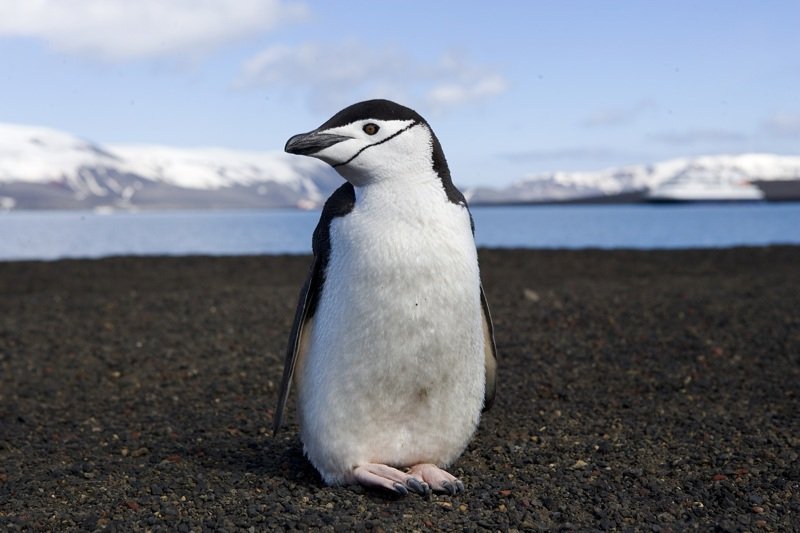Chinstrap penguins are the latest species whose survival is being jeopardized by climate change, according to researchers from Stony Brook University.
A research team spent 11 days trekking in Elephant Island, counting chinstrap penguin nests and noted a decline of 56% of the population, compared to the benchmark from 50 years ago, National Geographic reports.
Some colonies dropped by as much as 77%.
Elephant Island is located 150 miles above the Antarctic Peninsula and is primarily home to migratory animals like penguins and elephant seals.
To get an accurate estimate, researchers have to count every visible nest on the island one by one, Al Jazeera notes. They then repeat the counts three times to get within a 5% error margin. Overall, the team counted 52,786 breeding pairs of penguins, compared to 122,550 pairs in 1971.
The researchers believe that the dwindling population of chinstrap penguins is due to the disruptions of climate change, particularly the ways in which rising ocean temperatures have altered marine food chains.

"Such significant declines suggest that the Southern Ocean's ecosystem is fundamentally changed from 50 years ago, and that the impacts of this are rippling up the food web to species like chinstrap penguins," Heather J. Lynch, one of the leaders of the research, told Al Jazeera.
"While several factors may have a role to play, all the evidence we have points to climate change as being responsible for the changes we are seeing,” she added.
As climate change intensifies, Antarctica is melting at an increasingly rapid rate. Ecosystems that have held steady for centuries, if not millenia, are being ruptured in a matter of decades.
Many animals, such as bears and penguins, use the ice as a jumping off point to catch their prey. When the ice melts, these animals become stranded, far from their sources of food.
Other animals such as krill depend on the ice for protection as they reproduce and grow. In recent years, krill, which form the basis of the region’s food chain, have plummeted because of shrinking ice coverage.
The United Nations’ Global Goals 14 and 15 urge countries to rapidly curb greenhouse gas emissions to prevent further harm to the polar regions.
Animals in other parts of the world are being harmed by climate change as well. In fact, half of all species could go extinct by 2050 unless major environmental interventions are made.
Penguins, in particular, are a resilient species and their decline is an ominous sign.
"If penguins are dying, it means our oceans are dying," Dyan deNapoli, the author of The Great Penguin Rescue, told Al Jazeera. "Which ultimately will impact other species, including humans."